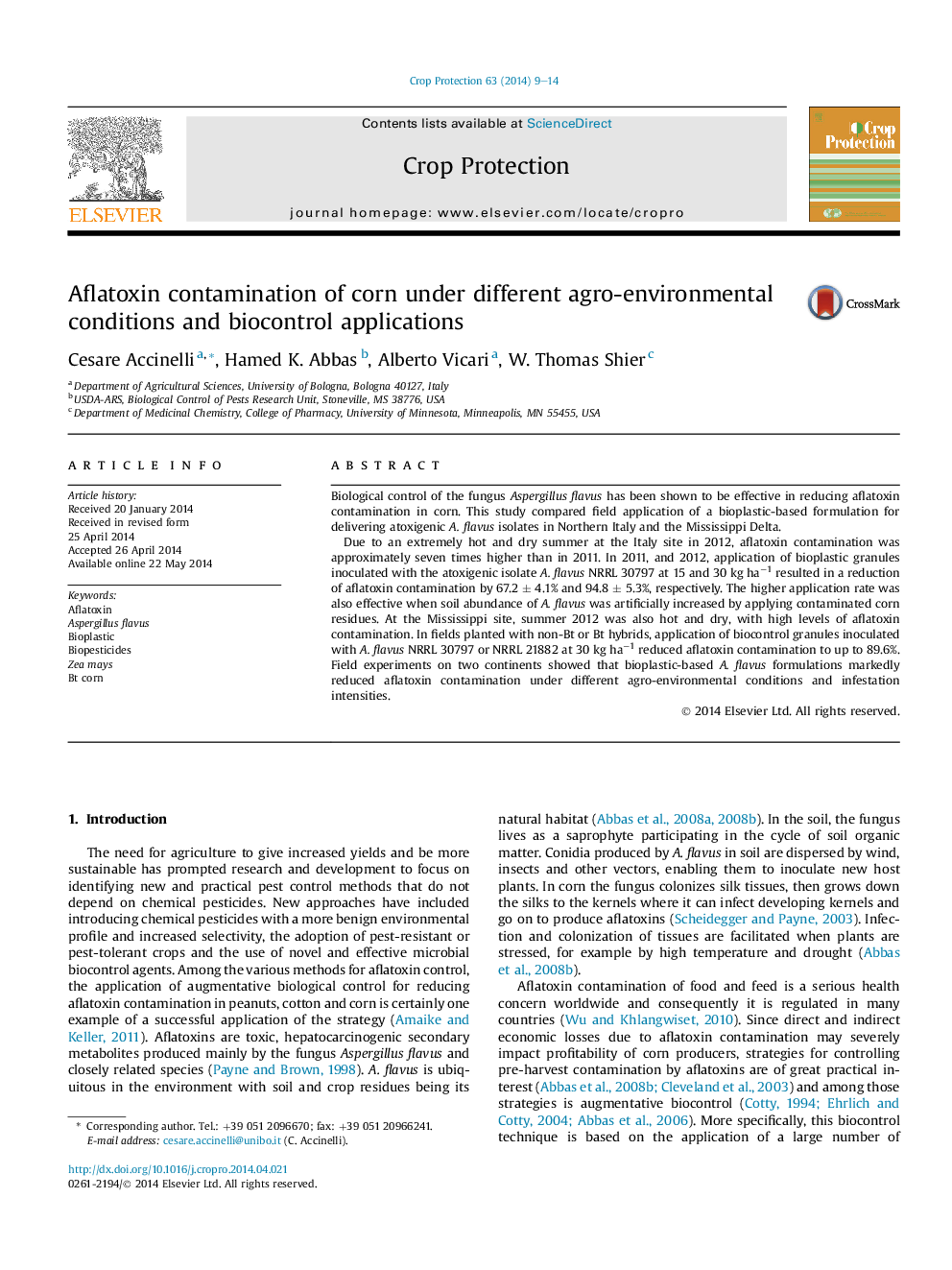| Article ID | Journal | Published Year | Pages | File Type |
|---|---|---|---|---|
| 4505932 | Crop Protection | 2014 | 6 Pages |
•A bioplastic granular formulation for controlling aflatoxins in corn was evaluated.•Granules were inoculated with two atoxigenic isolates of Aspergillus flavus.•Granules were applied in fields located in Italy and Mississippi.•Application of this technology was effective in reducing aflatoxin contamination.•This technology was reliable under different agro-environmental conditions.
Biological control of the fungus Aspergillus flavus has been shown to be effective in reducing aflatoxin contamination in corn. This study compared field application of a bioplastic-based formulation for delivering atoxigenic A. flavus isolates in Northern Italy and the Mississippi Delta.Due to an extremely hot and dry summer at the Italy site in 2012, aflatoxin contamination was approximately seven times higher than in 2011. In 2011, and 2012, application of bioplastic granules inoculated with the atoxigenic isolate A. flavus NRRL 30797 at 15 and 30 kg ha−1 resulted in a reduction of aflatoxin contamination by 67.2 ± 4.1% and 94.8 ± 5.3%, respectively. The higher application rate was also effective when soil abundance of A. flavus was artificially increased by applying contaminated corn residues. At the Mississippi site, summer 2012 was also hot and dry, with high levels of aflatoxin contamination. In fields planted with non-Bt or Bt hybrids, application of biocontrol granules inoculated with A. flavus NRRL 30797 or NRRL 21882 at 30 kg ha−1 reduced aflatoxin contamination to up to 89.6%. Field experiments on two continents showed that bioplastic-based A. flavus formulations markedly reduced aflatoxin contamination under different agro-environmental conditions and infestation intensities.
